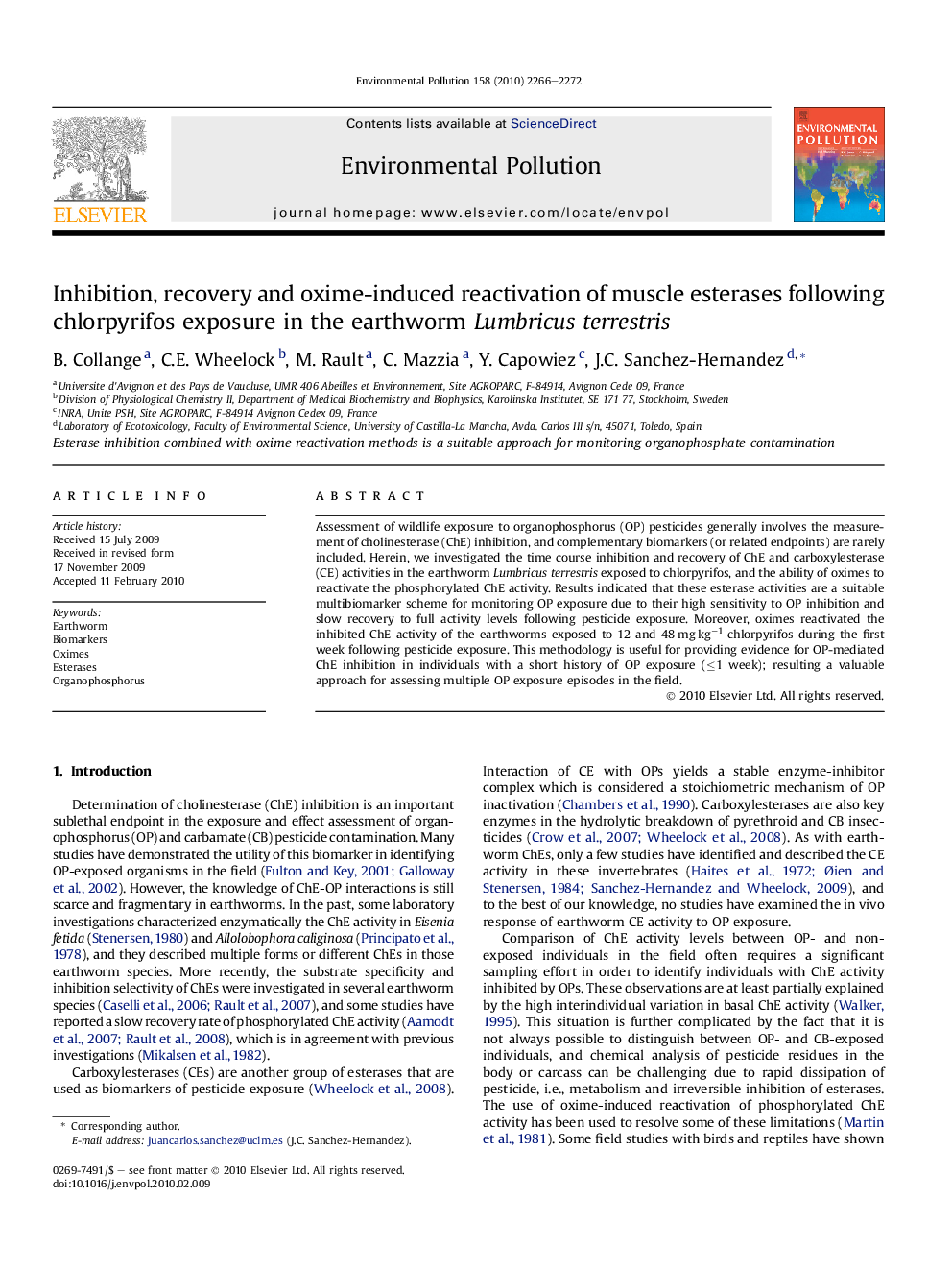| Article ID | Journal | Published Year | Pages | File Type |
|---|---|---|---|---|
| 4425937 | Environmental Pollution | 2010 | 7 Pages |
Assessment of wildlife exposure to organophosphorus (OP) pesticides generally involves the measurement of cholinesterase (ChE) inhibition, and complementary biomarkers (or related endpoints) are rarely included. Herein, we investigated the time course inhibition and recovery of ChE and carboxylesterase (CE) activities in the earthworm Lumbricus terrestris exposed to chlorpyrifos, and the ability of oximes to reactivate the phosphorylated ChE activity. Results indicated that these esterase activities are a suitable multibiomarker scheme for monitoring OP exposure due to their high sensitivity to OP inhibition and slow recovery to full activity levels following pesticide exposure. Moreover, oximes reactivated the inhibited ChE activity of the earthworms exposed to 12 and 48 mg kg−1 chlorpyrifos during the first week following pesticide exposure. This methodology is useful for providing evidence for OP-mediated ChE inhibition in individuals with a short history of OP exposure (≤1 week); resulting a valuable approach for assessing multiple OP exposure episodes in the field.
